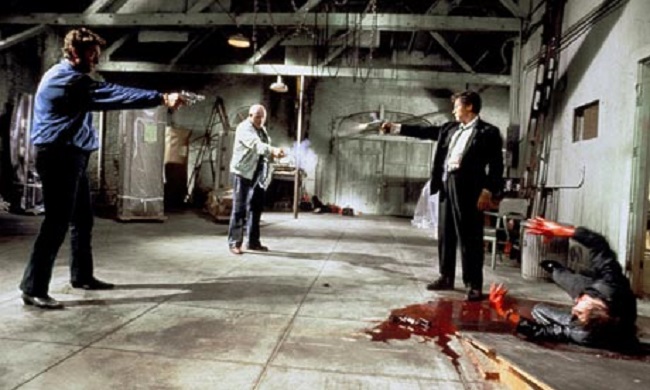
Updated July 25th, 2016
It has been over 2 months since Google reduced the Local results from 7 down to 3. Since the change, I’ve been attempting to analyze various items in the Pack – picture sizes, who is ranking, why they are ranking and what factors are keeping the businesses in the Local Stack. I’ve written several posts on how terrible the results are and what a poor experience the Local Stack has been so far. I think Google is doing some things to better the user experience but it still has a ways to go.
I have been noticing more and more small business, “mom and pop” shops, located in the Local Stack since the change and decided to test my theory that big Brands are being pushed out of the Local results.
The purpose of this post is two-fold.
- Determine if big Brands are being pushed out of the Local Stack
- Determine what factors contribute to being listed in the Local Stack
I do this even though Moz recently released their 2015 Local Search Ranking Factors because, as Max Mizner pointed out, it’s just a survey….take it with a grain of salt.
Here are some quick Observations followed by my Process and Analysis:
Observations
- Businesses do not need a website to rank in the Local Stack [tweetthis twitter_handles=”@brianbarwig”]Businesses don’t need a website to rank in the Local Stack #SEO[/tweetthis]
- Only 3% (5/150) of queries failed to produce Local results
- Several businesses in the Local Stack had terrible websites
- Broken Pages
- Non-Relevant Pages
- Websites circa 2000
- Pigeonesque results
- Phone book results (AAA Auto Insurance)
- For the Insurance Industry; reviews, links and a website did not factor into ranking in Local [tweetthis]Reviews/Links/Websites no factor in Local Stack ranking for Insurance Co’s[/tweetthis]
- The Auto and Pizza industries produced many businesses in the Local Stack which were multi-location for their area, though only one location ranked in Local. They are the “brand” for that area (more on this below)
- Hair Salons had a large number of reviews, with most being positive
- National Brands are showing less than small businesses in 4 of the 5 tested industries [tweetthis]National Brands are showing less than small businesses in the Local Stack[/tweetthis]
- Businesses populating the Local Stack were typically not in the same zip code, nor are they focused around a certain area in a city. The city centroid typically had no effect on the results for the Insurance Inudstry
My Process
- I examined 7 separate industries to determine who, how and why businesses are ranking in the Local Stack.
- I began with the Insurance Industry, because this is where I noticed brands missing from the Stack, then examined 4 other industries similar to insurance
- The industries were determined to be similar to the Insurance Industry by:
- Having large corporations but also having many small, local businesses
- Having large chains with a nationwide presence
- Brands which were typically ranking in the Local results
- Two other industries were analyzed but they did not have the criteria of the other 4 industries and were quickly ruled as outliers.
- The comparisons to the insurance industry were minimal
- These industries either had too many small players and no large brands or vice versa
- They brought good insight into the process
- You can view my data and analysis here: https://docs.google.com/spreadsheets/d/1AKj4U49saSa3k5xQxJkyJ42jOK_e5ZOeAwX_iDJiAl4/pubhtml
Industries Analyzed
Armed with the information above, I analyzed each of the following industries:
- Auto Insurance
- Pizza Restaurants
- Auto Repair Shops
- Hair Salons
- Self Storage
- Chiropractor – Outlier
- Sporting Goods – Outlier
Analysis
For the test, I analyzed 25 cities in each of the 7 industries listed above. The query tested was the same for each city but differed by industry. For example, I chose to test “pizza restaurants”, so each query within the 25 cities was “city pizza restaurants”. For the insurance industry, I chose “auto insurance”, so each query was “city auto insurance” and so on.
I typically chose 10 large sized cities, 10 medium cities and 5 small cities in order to get a good mix of results. Each query and business was analyzed by 10 factors. Those factors were:
- Number of listings appearing in the Local Stack
- Name of Businesses in the Local Stack
- Number of Reviews for each business (Google Reviews only)
- The Average Review Rating for the business (Google Reviews only)
- Google My Business Primary Category
- Domain Authority of the website in the Local Stack (from MozBar)
- Page Authority of Page in Local Stack
- Number of Backlinks on the Page in the Local Stack
- Number of Linking Domains from the website listed
- Moz Local Score (Determined by the Verified Listing in MozLocal which was also listed in the Local Stack)
- For additional information about the Moz Local score, why I use it and why it is important, check here.
- Check out the data here
Hypothesis
With a shrunken Pack; links, citations and reviews will play huge factors in who ranks in the Local Stack. I expect to see many small “mom and pop” businesses with strong citations, quality backlinks and good reviews pushing out the Branded companies.
A Pattern?
The one pattern which appears to be coming through is that Brands are taking a hit. Brands are now taking a back seat to local “mom and pop” shops in all 6 of the industries I analyzed. If there is a large, national brand in a city where there are also local, smaller players, the small business is taking the Local Pack from the Brand.
I don’t pretend to know everything about SEO (the main reason I’m writing this post is because I don’t know what’s going on here) but I’m not a novice either. I tied my analysis back to one of the most trusted sources in Local SEO – the Moz Local Ranking Factors. The 2015 study was recently published, features many of the most respected SEO’s in the country, takes into account hundreds of Local ranking factors and is easily comparable to prior years.
I’ve run through the past and most recent Moz Local Ranking factors and many of the principles don’t seem to apply to the new Pack. The typical ranking factors one would normally expect to see having an impact are not present.
Let’s analyze these industry listings further though because it gets interesting.
Insurance Industry
I am directly involved in the insurance industry and have noticed terrible listings being displayed for some time. This industry is what prompted me to conduct this study.
First, take a look at some of the websites/businesses being displayed in the Local Stack:
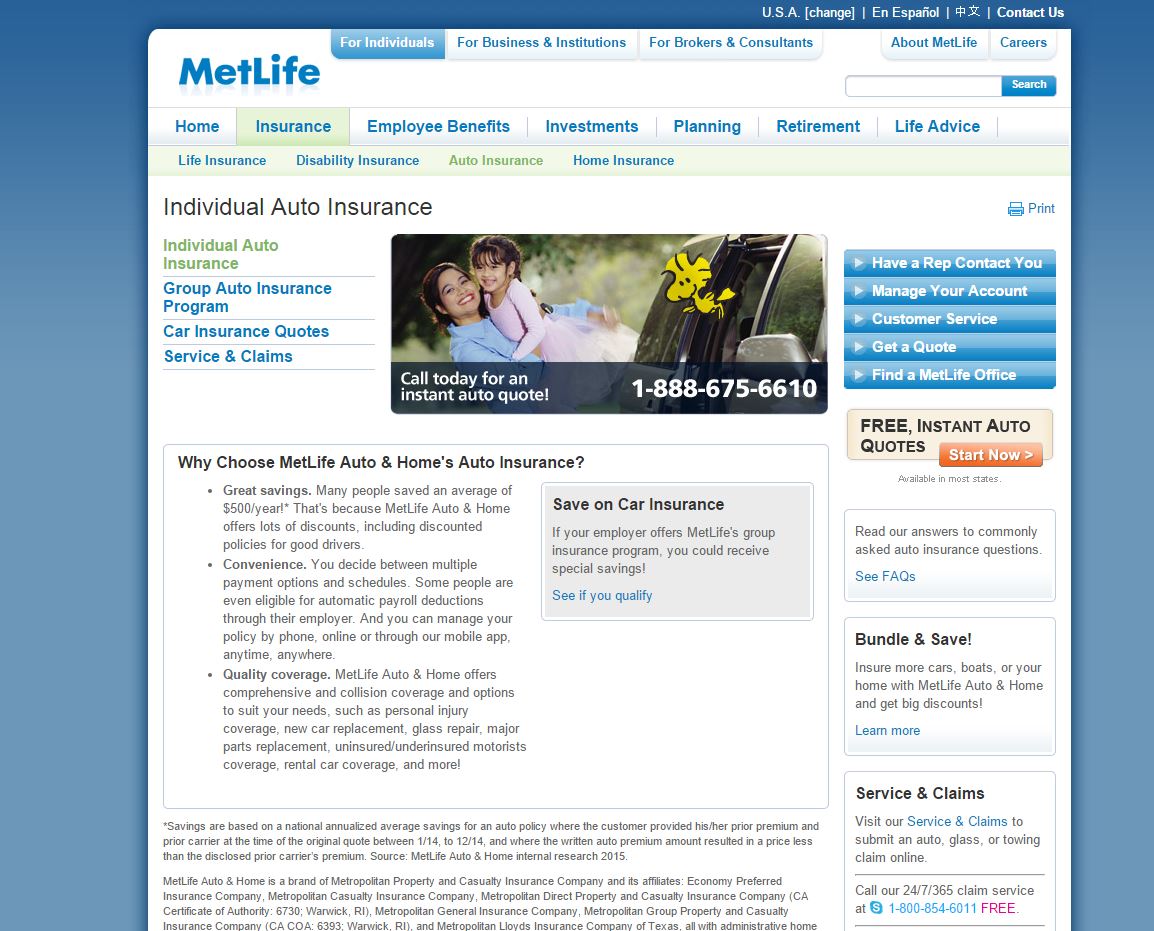
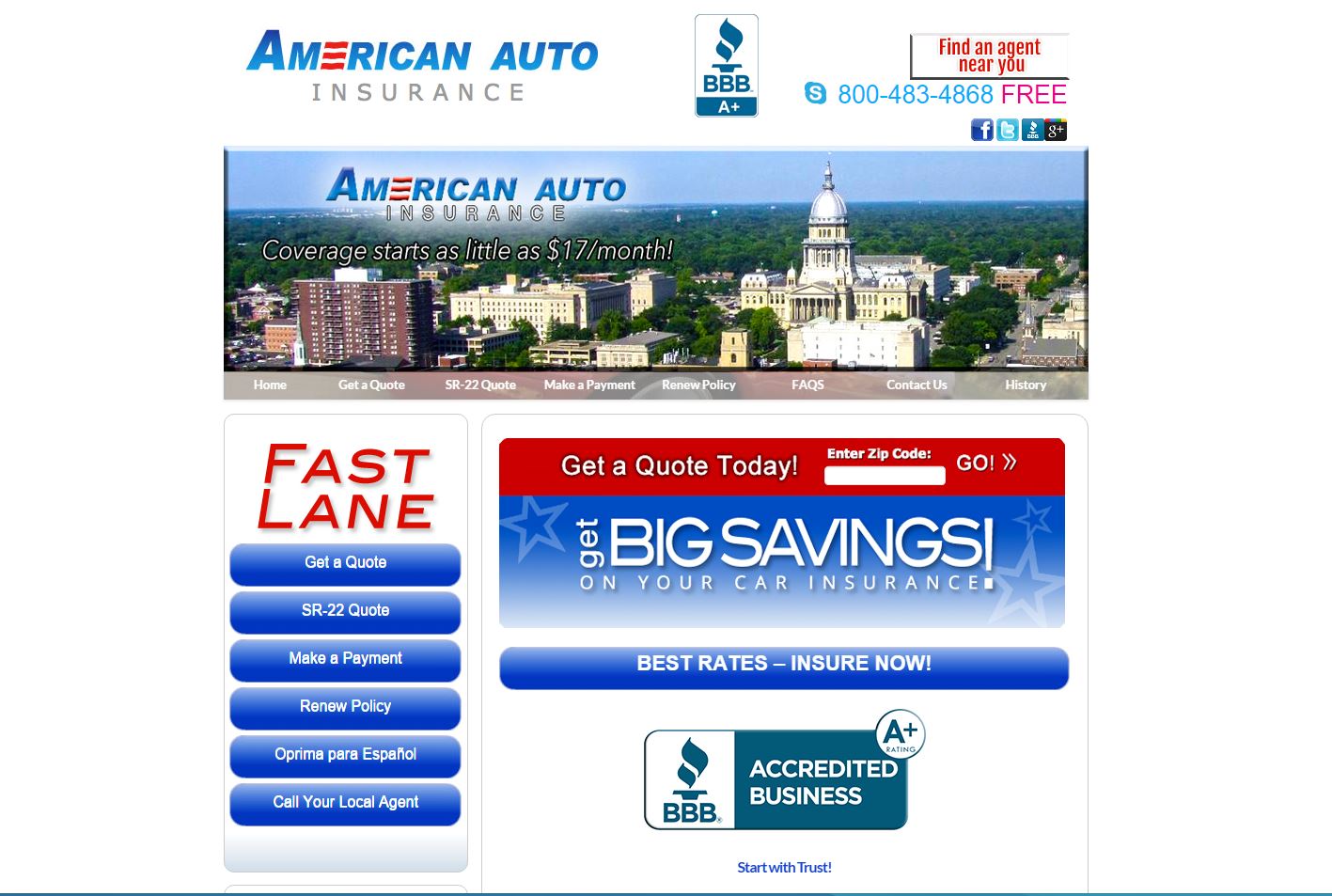
The generic MetLife Auto Insurance page is ranking in the Local Stack for some reason. Not only that, but holy generic. There is no specific information for any city, no reviews, etc. The second listing is completely bland and is a poor user experience.
Let’s move on…
According to the Moz Local Ranking Factors, a physical address in the city of search, consistency of structured citations, proper GMB categories and proximity of address to point of search are the four biggest factors in appearing in the Local Stack.
Here are two examples I can pull showing none of this matters for these insurance queries.
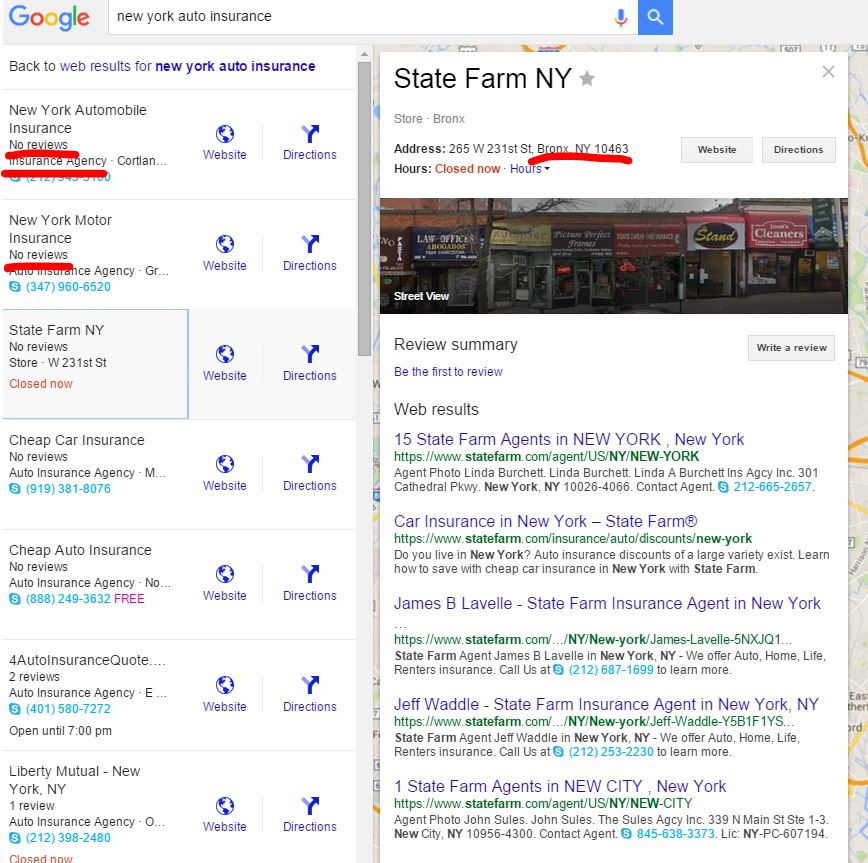


Three different categories listed, 1 location in a different borough – the Bronx – and not in New York City and a Moz Local score which runs in the 40’s and 50’s.
Los Angeles wasn’t any better.
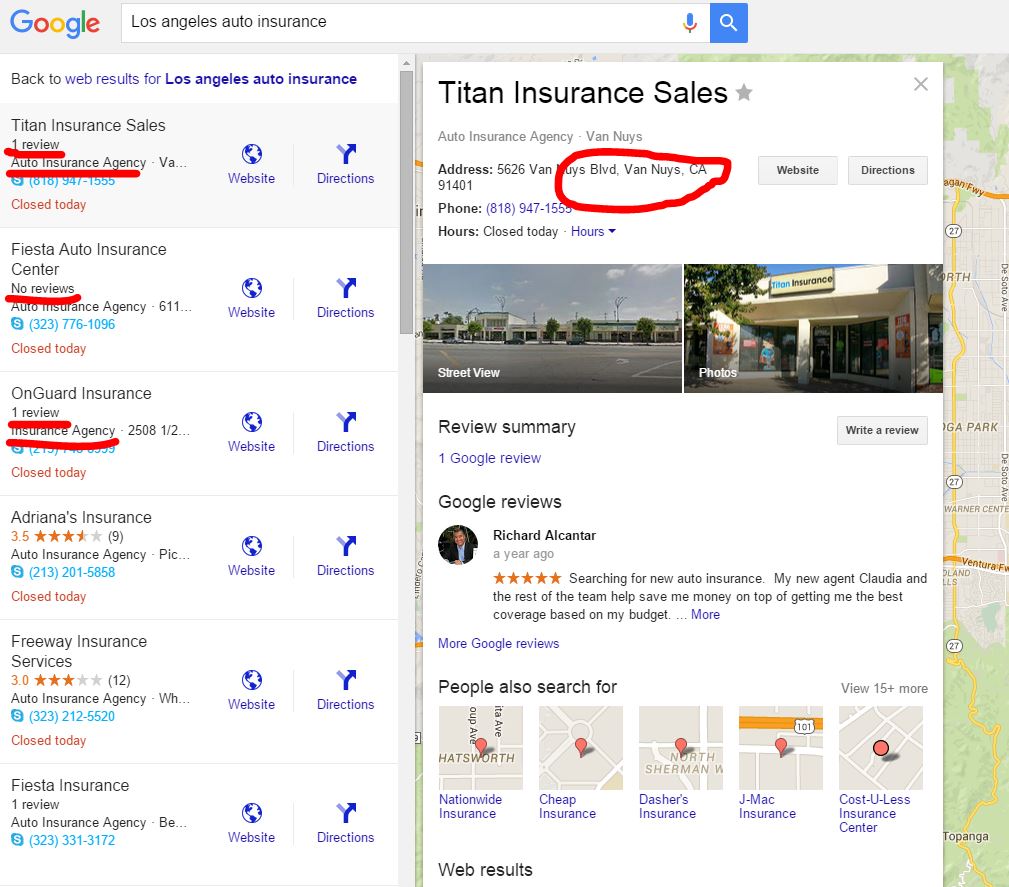

The #1 listing isn’t even in LA. The Moz Local scores for these are in the 30’s and 40’s. That is…poor and inconsistent with the MLRF’s.
There are other examples, but let’s continue on….
The Quantity and Quality of Google Reviews are factors 11 & 12 respectively within the Moz Local Ranking factors. Perhaps those are more significant than we thought? Let’s try New York again.



Or not significant at all. Zero reviews all the way down until the 6th listing.
How about Chicago?
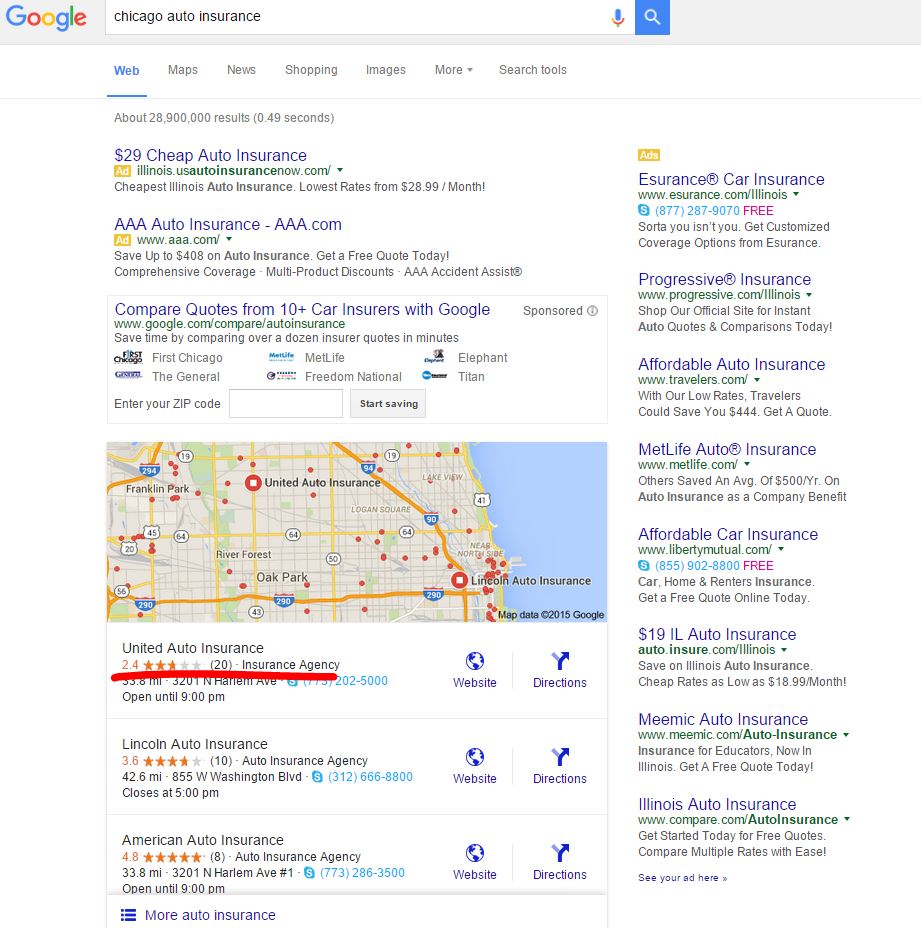

At least reviews are present. The top result has 20 reviews and a 2.4 average rating though. Lincoln Auto seems to be upping their game as their rating was previously garbage as well.
Let’s try Scottsdale.
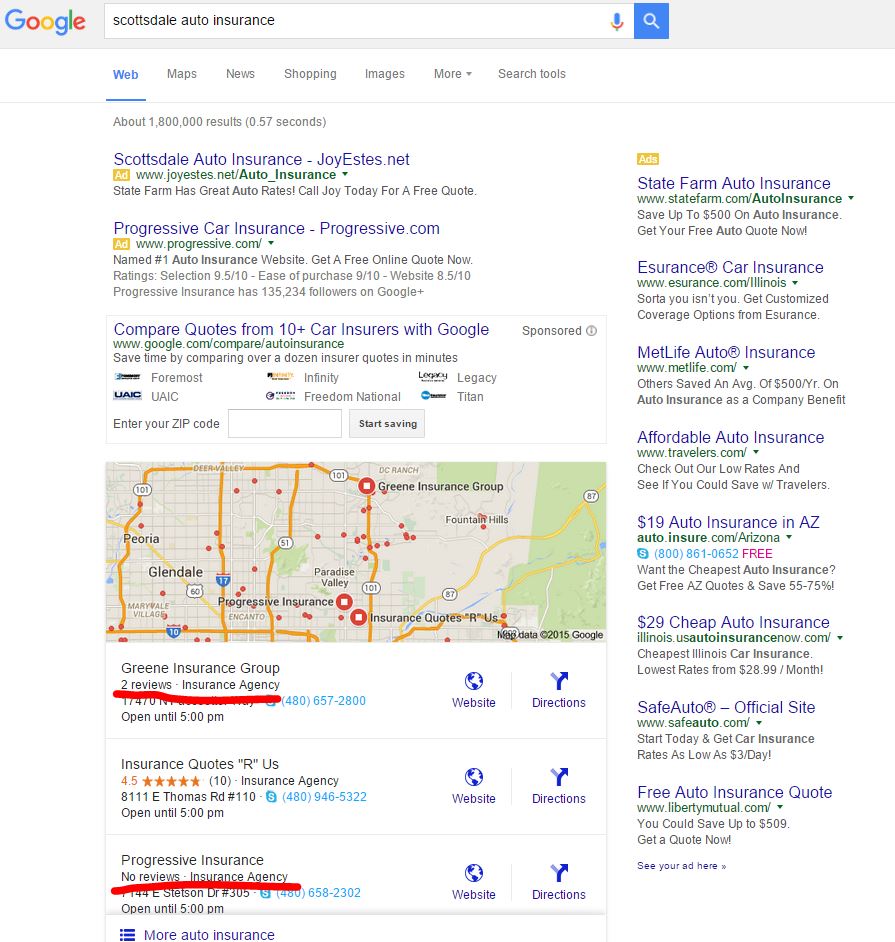

Again, two of the top three results have minimal, if any reviews.
It doesn’t appear reviews are much of a factor if the best Google can come up with is 0 reviews in New York and complete crap in Chicago. The second result in Scottsdale shows 10 reviews with a 4.5 average while the first and third result both have 0 reviews.
Notice for the Insurance Industry, many of the results are not the big players you would suspect – State Farm, Allstate, Nationwide or Geico. They are small, local “mom and pop” businesses. Where are all of the corporate giants? Why are they not ranking above the small businesses with terrible citations, citation inconsistencies, minimal reviews or no website? You may say that the big players must have terrible citations and NAP issues. This is true with a few of the national corporations but others are on-point. One of the companies I have personal, hands on experience fixing and completing their NAP issues.
What is making those insurance companies rank for Chicago Auto Insurance? The reviews are middling and the websites are terrible. The Moz Local scores are in the 80’s and their backlinks are in the hundreds.
Wouldn’t it make more sense to have an agent who is in the city of Chicago, has great reviews and is with a large corporation ranking higher than the 12th spot? It would if there was a less dependency on links. Joe only has 23 links on his website compared to the 226, 511, and 144 the top 3 Local Stack businesses do. Turns out links still matter.
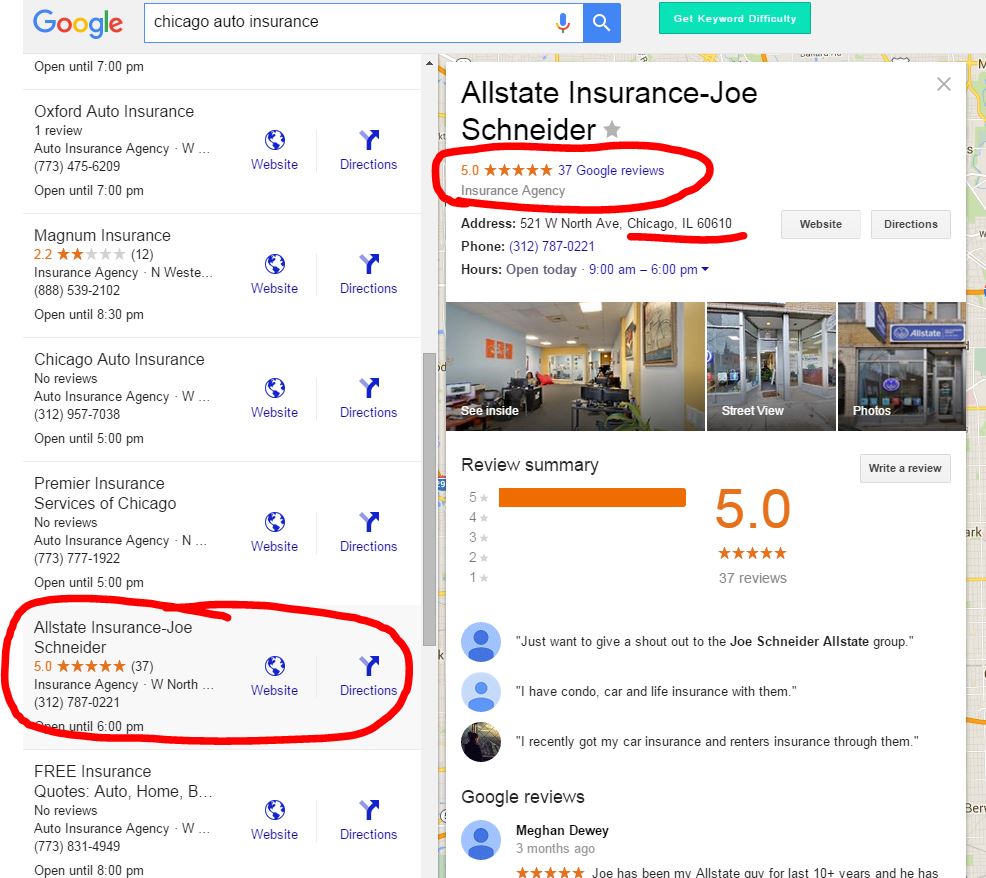

Juan is in a different situation in Houston. He has great reviews, a Moz Local score in the upper 80’s and is with Allstate. He has minimal links but the top Local Stack results also have a low number of links (11, 6, 6 respectively). Juan has a Moz Local score in the upper 80’s and these other companies are in the 30-40 range. What gives? This Nationwide agent looks to be in a similar dilemma to Juan – positive reviews, with a brand and solid Moz Local Score. These 2 agents rank near the bottom of the Local Finder. Why?
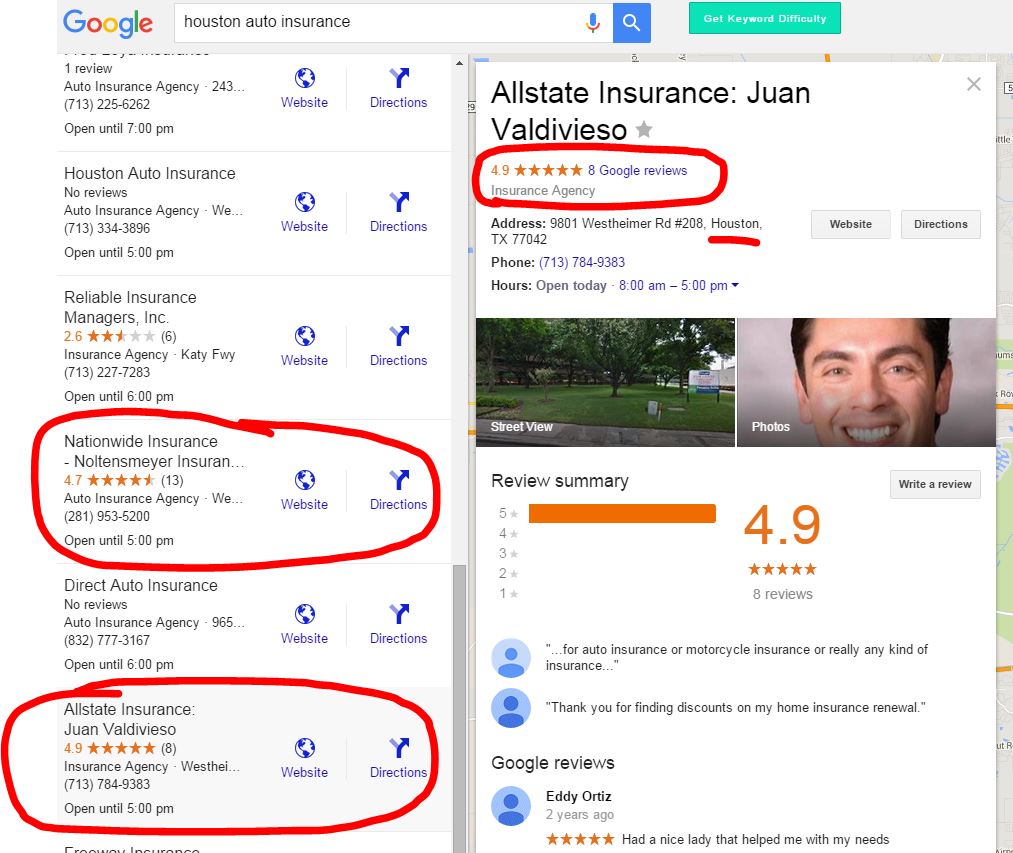

Let’s recap the Insurance Industry:
- Businesses with horrible or non-existent websites are ranking in the Local Stack [tweetthis]Horrible/non-existent websites for Insurance Co’s ranking in Local Stack[/tweetthis]
- Businesses physically located outside of the city are ranking in the Local Stack for the city they are not located in
- The Moz Local Score for many of the businesses are in the 20-65 range [tweetthis]Moz Local Scores were 20-65 for Insurance Co’s ranking in Local Stack #SEO[/tweetthis]
- Most of the businesses have less than 25 links
- Many of the businesses ranking do not have Google Reviews present
This was one of the most confusing/frustrating industries for me to study. Reviews, Moz Score, Categories, Websites, Links and Addresses didn’t seem to make much difference in how a business ranked. What is causing these half-assed mom & pop shops to rank above brands? If the Moz Local Ranking factors were not applying to the Insurance Industry, did they apply to others?
Remember, I wanted to analyze industries similar to the insurance industry in order to easily compare. Industries were determined by having large corporations with a nationwide presence but also many small, local businesses as well.
Pizza Restaurants, Auto Repair Shops & Hair Salons
Auto Repair Shops, Pizza Restaurants and Hair Salons all graded out similarly. Almost all of the businesses in the Local Stack were in the city search query, unlike insurance. The GMB Categories were much more consistent, reviews were present and positive and most of the Moz Local Scores were at least in the 70’s. This jives with the Moz Local Ranking Factors but where are the big brands? I checked several big brands Moz Local Scores and they were ranking in the 80’s and 90’s with generally less reviews and a worse Average Review Rating though.
For the query “city pizza restaurants”, I expected to see a good amount of popular local pizza parlors in addition to the big brands of Pizza Hut, Dominos, Papa Johns, etc.
The only thing I found was the small businesses in the Local Stack. Most of these businesses tended to have multi-locations in the area, though only one of the locations was ranking in the Pack. It was as if Google was rewarding these locations for being the “brand” in their area and pushing the national brands out.
Look at Chicago Pizza Restaurants – Giordano’s, Lou Malnatis and Pizanos all have multi-locations in the area.
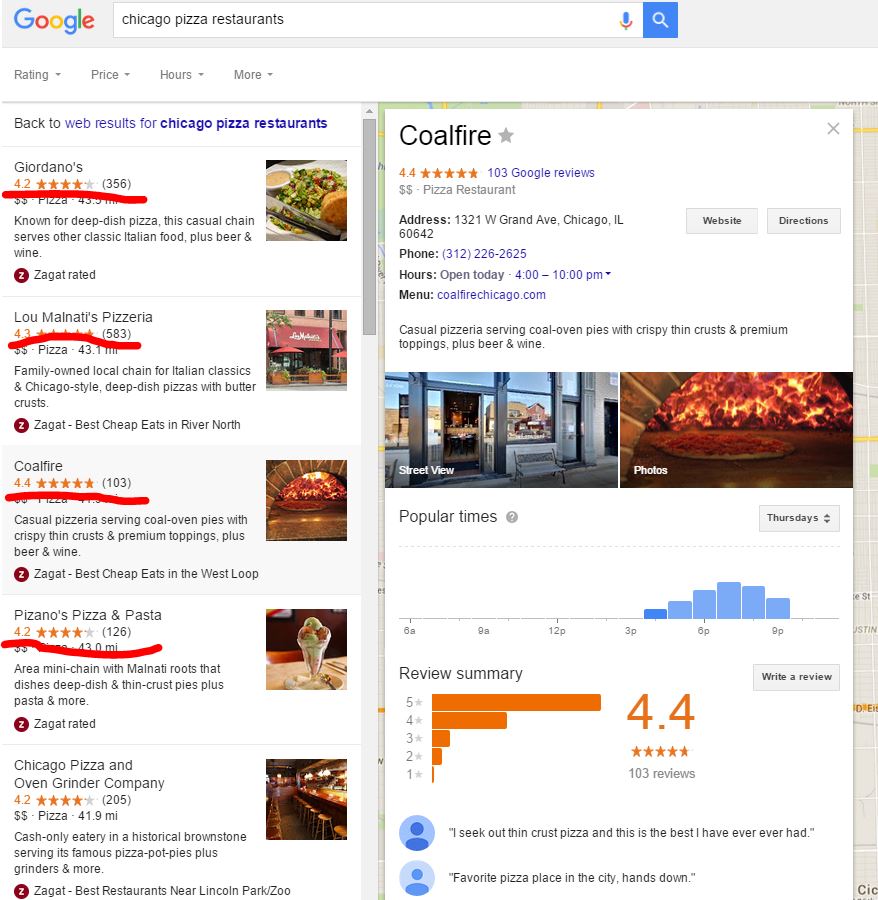

Same with Forth Worth pizza restaurants.
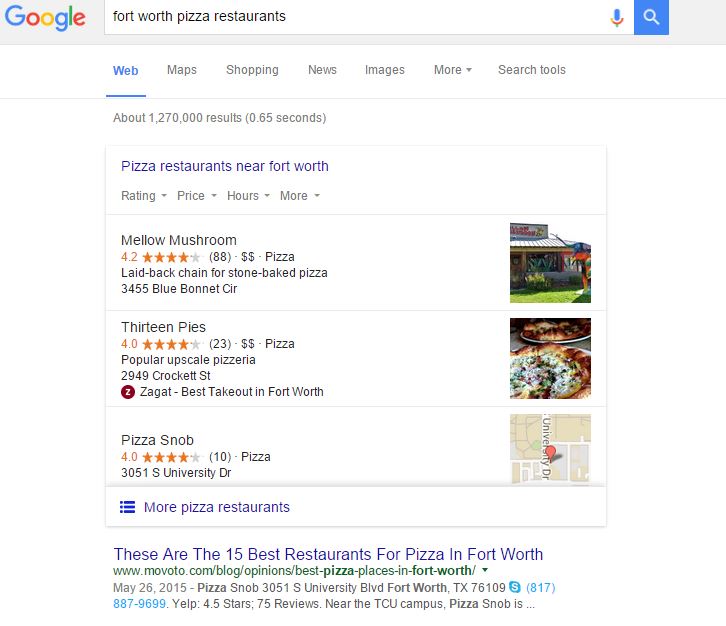

Jacksonville was similar.
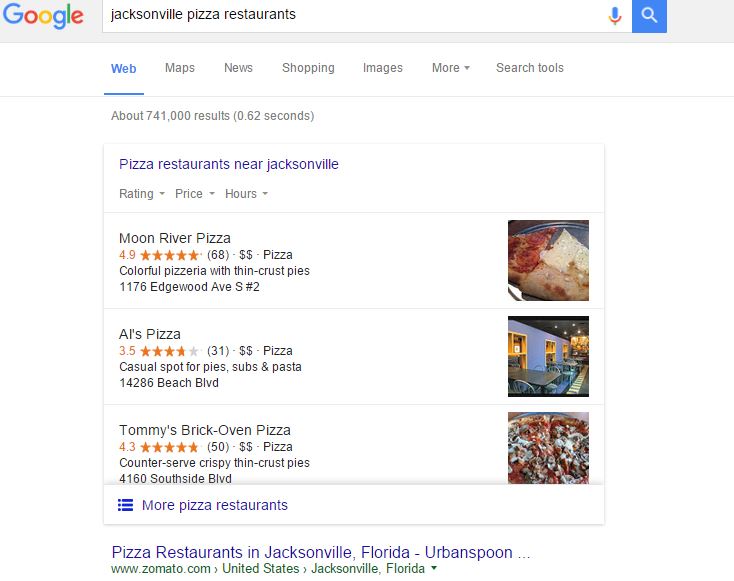

And lastly, Baltimore.
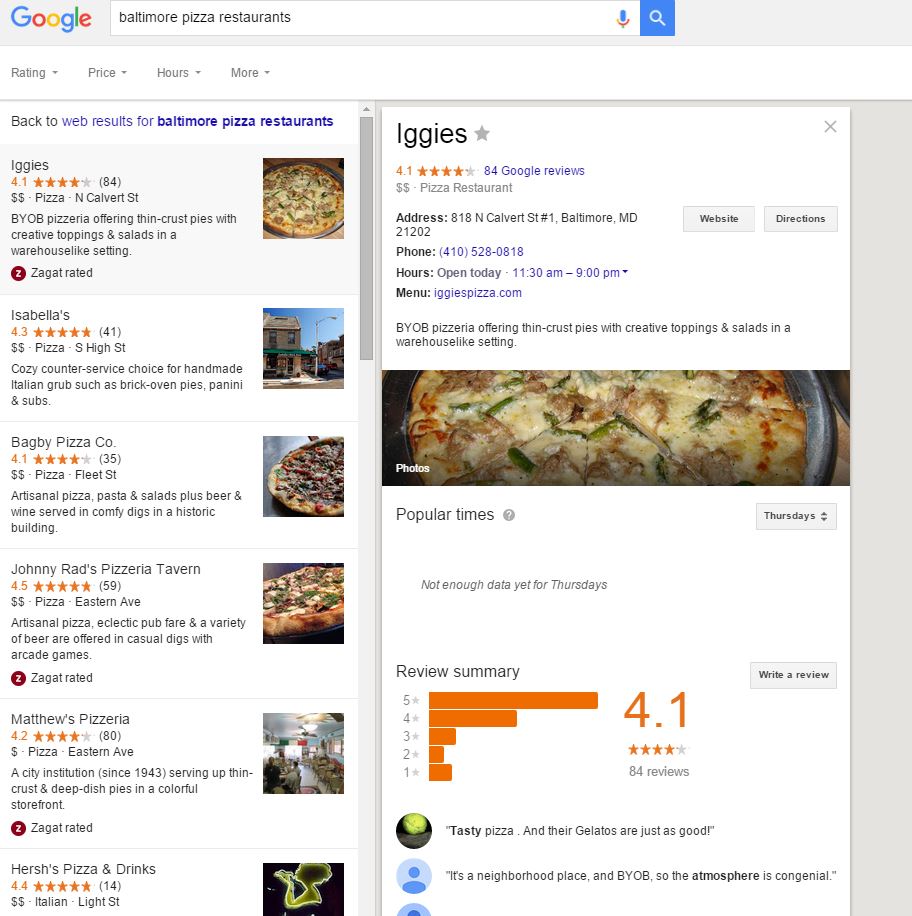

Here are some examples from the Auto Repair Industry. Again, I thought I would see the likes of Pep Boys, NAPA Auto Parts and Firestone but the smaller players dominated.
Chicago –
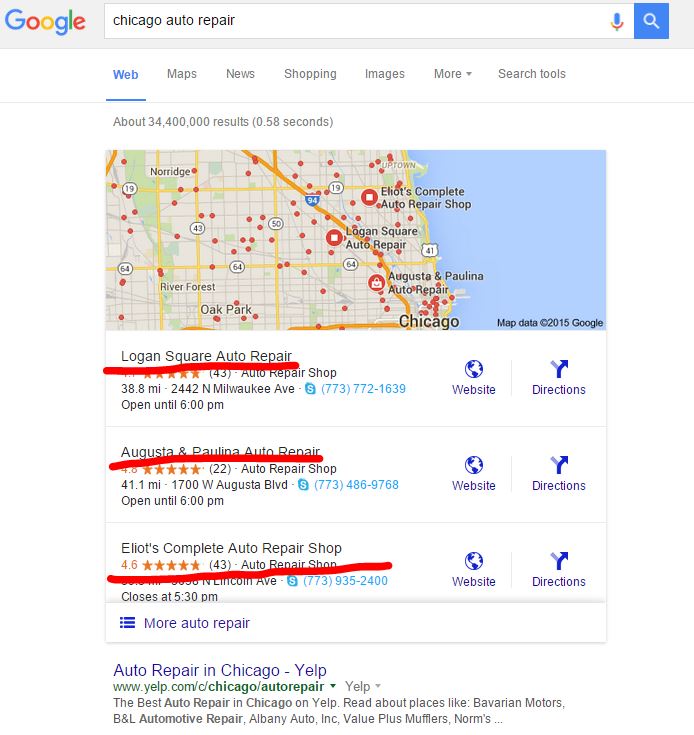

Los Angeles –
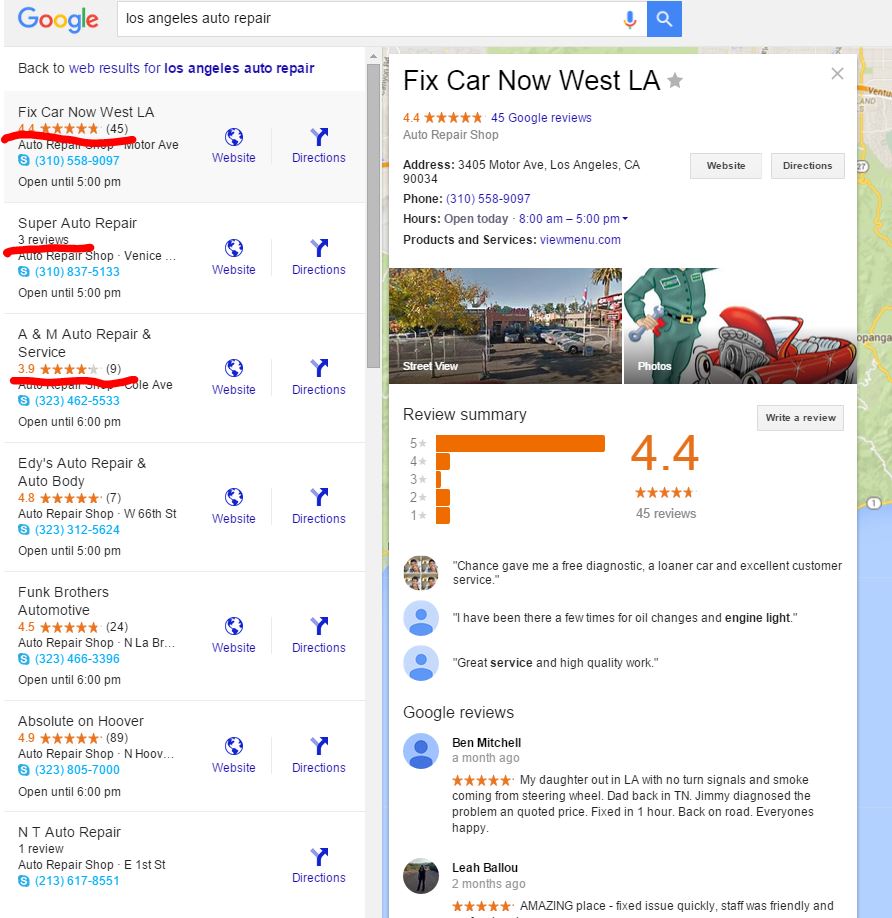

Minneapolis –
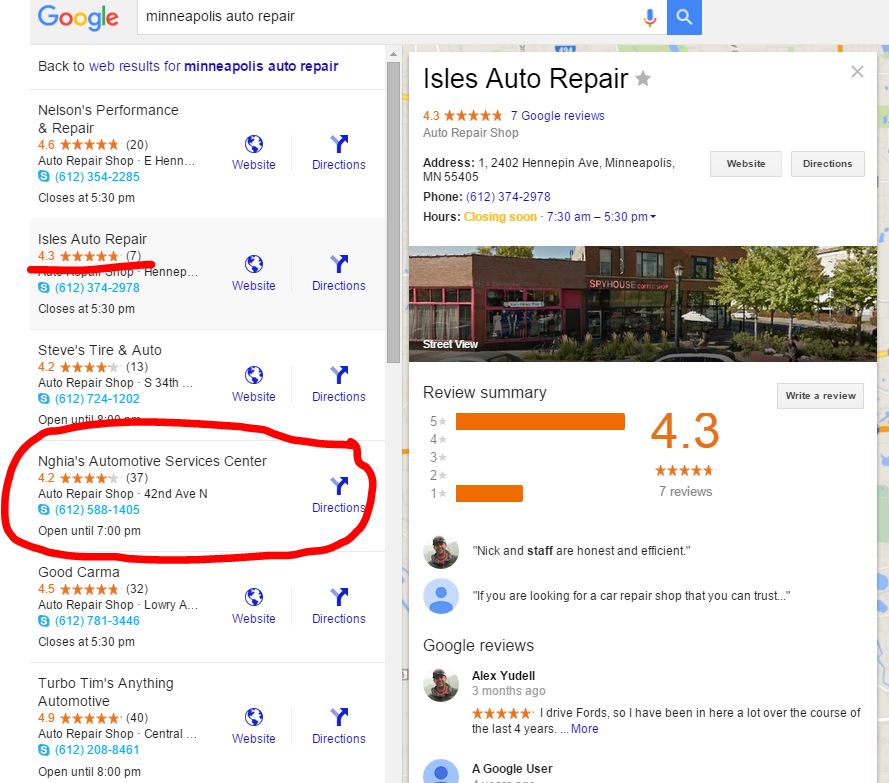

Hair Salons didn’t have any Super Cuts, Sports Cuts or Beauty Brands to be found.
Milwaukee Hair Salons –
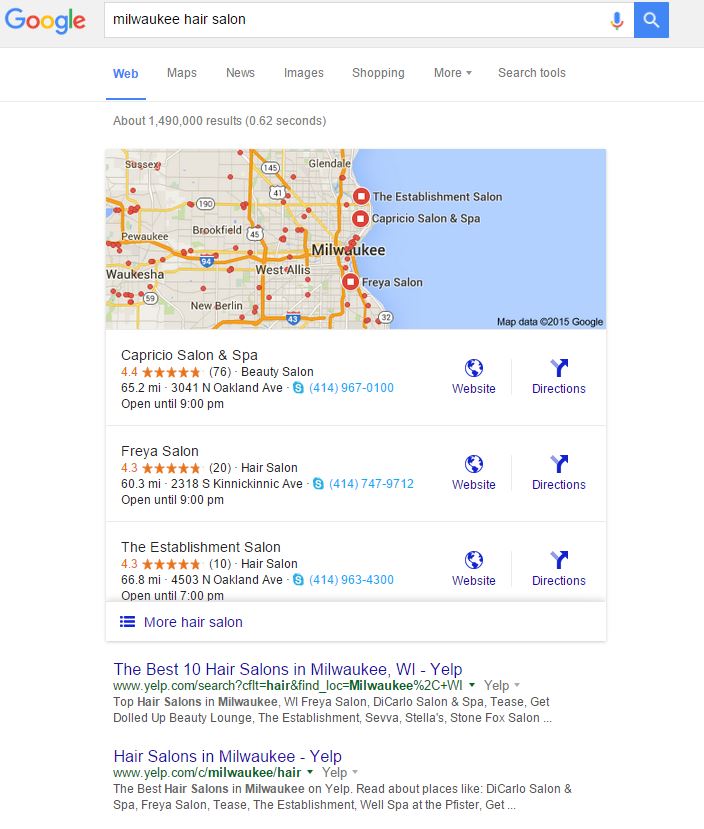

Chicago Hair Salons –
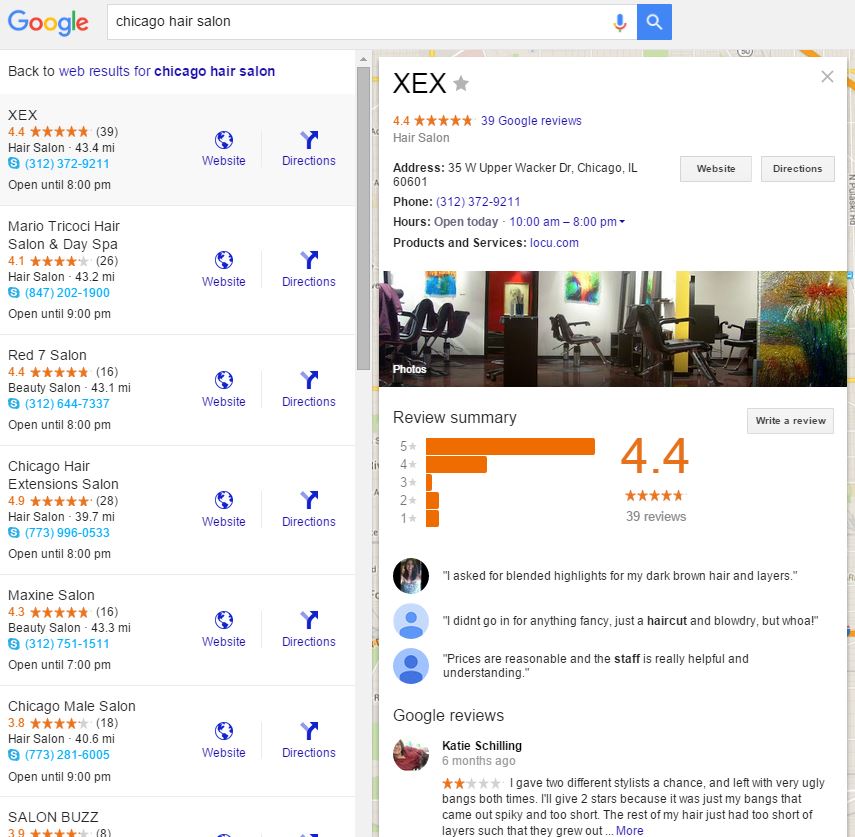

LA Hair Salons –
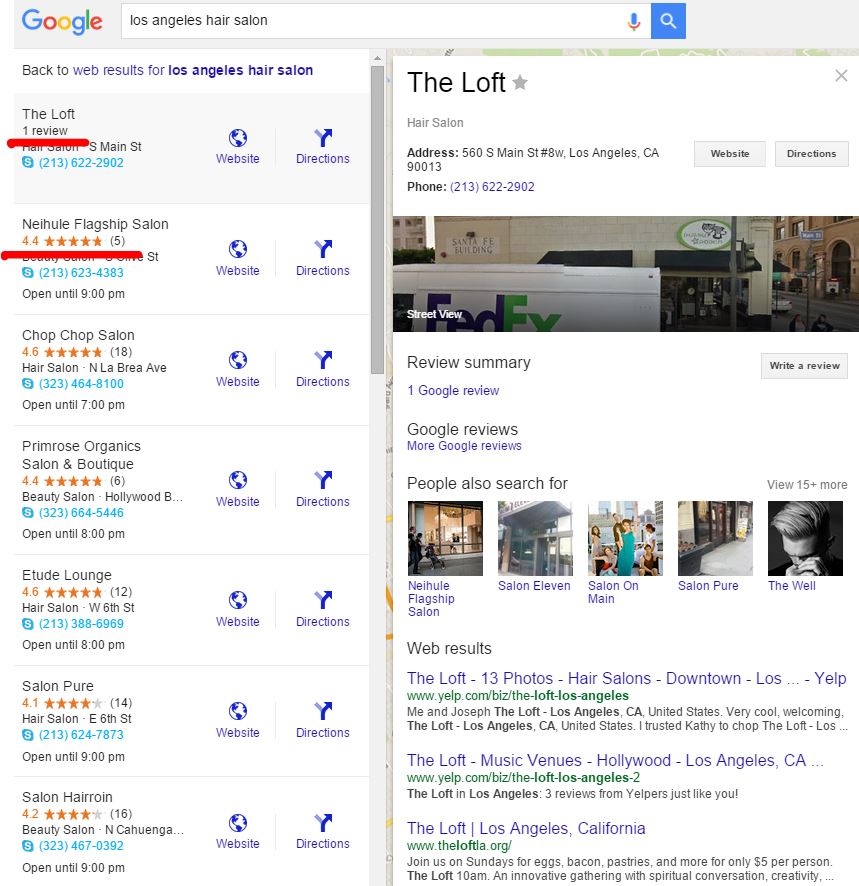

A recap of the Auto Repair, Pizza and Hair Salon industries:
- There are many more, positive reviews in these industries compared to Insurance
- Businesses with horrible or non-existent websites are still ranking in the Local Stack
- For those with websites, Links were much more prevalent
- The Moz Local Scores were in mostly in the 60-80 range
For the Insurance Industry, reviews didn’t matter much, if at all. For Pizza, Auto Repair and Hair Salons, do reviews matter more? I can’t imagine there being a different algorithm for differing industries but something is off here.
Many of the businesses ranking in the Local Stack were businesses with multiple locations in the area. They are the “brand” for that particular area. Regardless of the amount of Links, the consistency of the Citations or the condition of the Website, these small businesses consistently outranked big Brands.
This is my hypothesis: Google is pushing out the national brands in cities where there are also local, small businesses which are still relevant. By relevant, I am referring to businesses which continue to thrive in their industry and where nationwide companies are mostly non-existent. You will see in the Sporting Goods example below, there aren’t many small businesses which are in the sporting goods game anymore as many of them have been devoured by the big players. Chiropractors, doctors, dentists and plumbers would all be good examples where I would expect small players to be wining as there aren’t many, if any, national brands in those sectors. [tweetthis]Local Stack not showing brands when relevant, small businesses are present[/tweetthis]
There are probably plenty of SEO’s who think this is complete bullshit. That’s fine. Call me out, but do so with examples because my data is there. The data is available, you can do the searches yourself. Tell me why you think my theory is wrong.
I would love to hear your opinions on this.
The Other 2 Industries – Sporting Goods & Chiropractic
When I analyzed the Sporting Goods and Chiropractic Industries, I quickly realized these industries were not similar enough to the Insurance industry. The businesses were mostly localized as there are very few Chiropractors who have a nationwide presence. There are also very few small, mom and pop sporting goods stores left in the country. Dick’s Sporting Goods and Sports Authority dominated most of the Local Stack.
Even though Dick’s and Sports Authority dominated the Local Stack, Sports Authority did not have strong Moz Local Scores much of the time. Their NAP was inconsistent and they were missing from many of the directories. Dick’s was on point with consistent NAP and a presence on most of the major directories.
For the Sporting Goods industry, there are a few national brands and minimal small businesses who focus on sporting goods anymore. Thus, it makes sense the national brands would win out over the small businesses here.
For Chiropractors, there are not many, if any, national brands so the small business would win in the Local Stack.
Self Storage Industry
The only industry I analyzed which coincided with the Local Ranking Factors was the Self Storage Industry. The big, nationwide players – Extra Space Storage & Public Storage – dominated the Local Stack. Their Moz Local Scores were consistently in the 80’s – 90’s, had a good amount of positive reviews and had a Domain Authority near 70.
This is the industry which bucked the trend. If you are part of a large, nationwide brand and want to rank in Local, study what Extra Space Storage and Public Storage are doing. Their NAP is consistent and they are listed on all the major citation directories. They have positive reviews for each location and are benefiting from the power of their top level domain.
The most important aspects of these listings appears to be the NAP consistency and the powerful directories their business listings are on.
Terrible Websites
A few items which were consistent throughout my research were terrible websites and exact match keywords in Titles. This reminds me of Pigeon. Look at these websites:



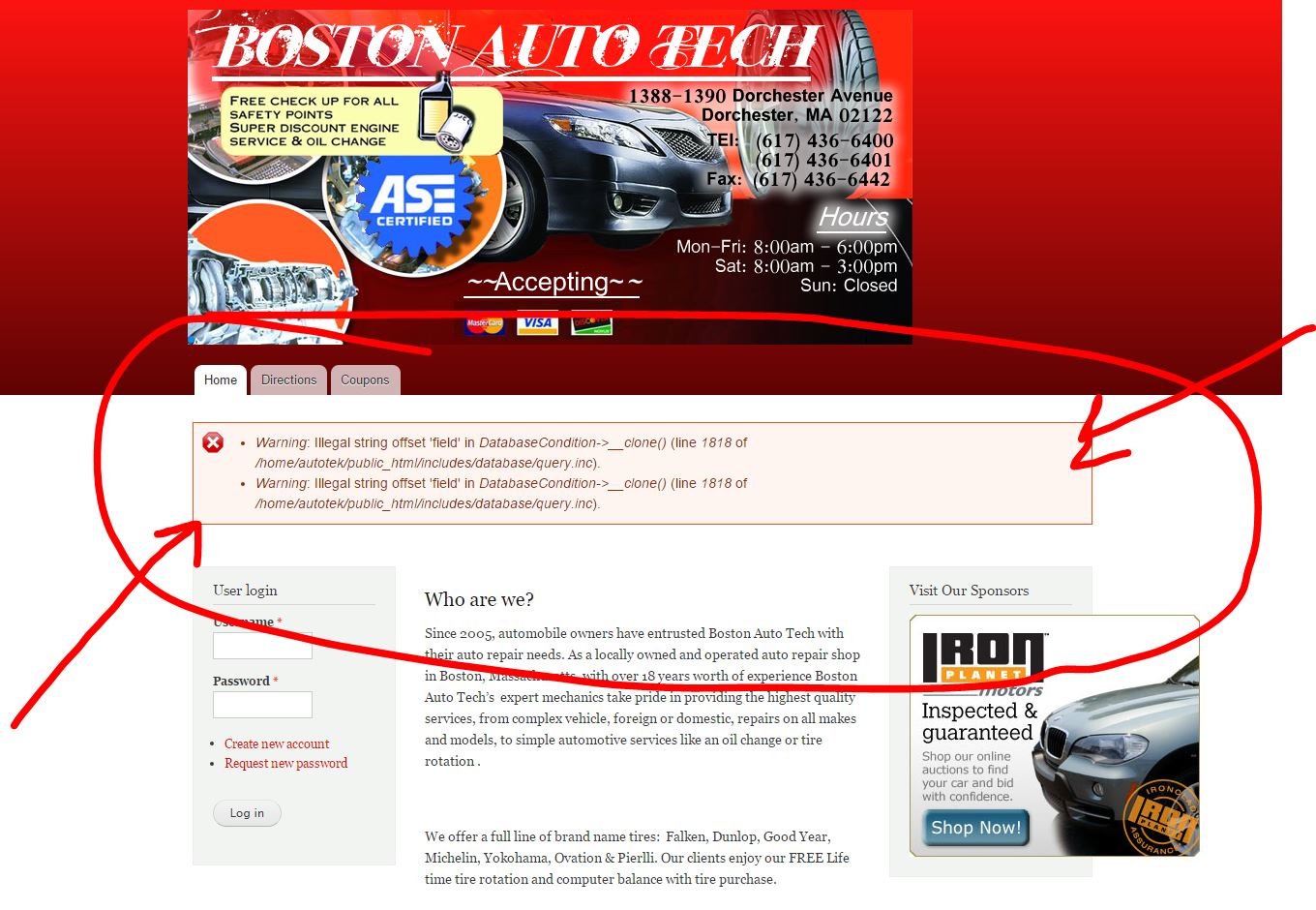



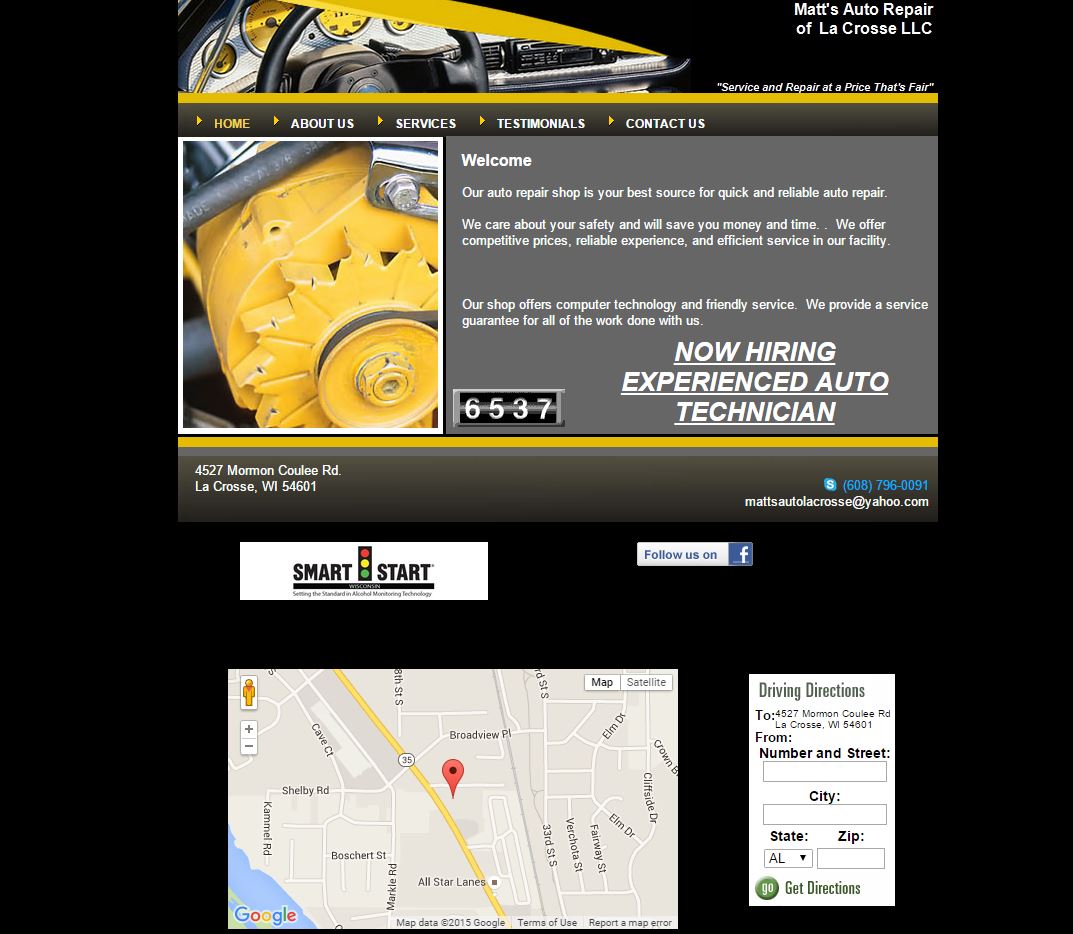

Thanks Google. That’s Useful
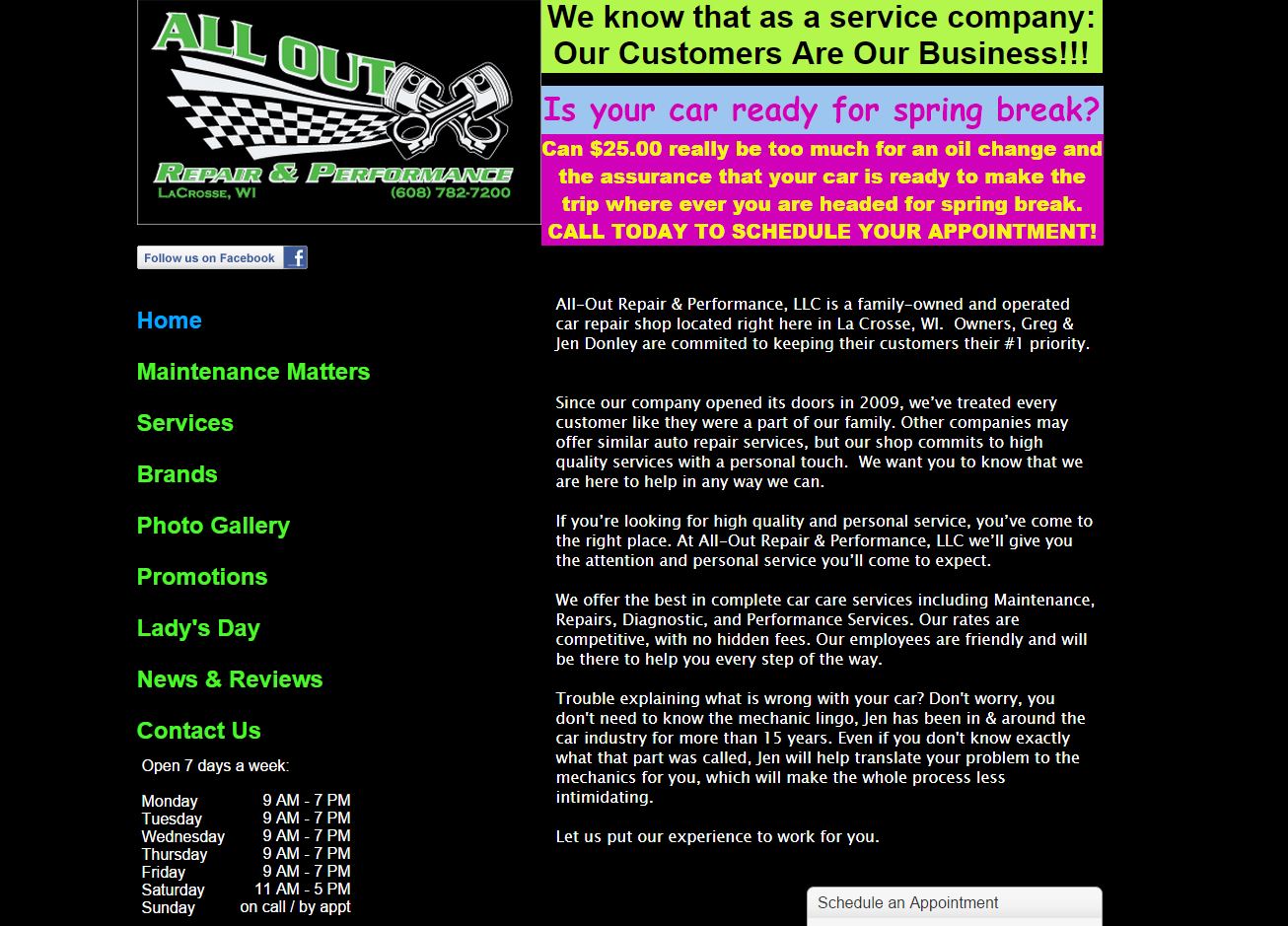

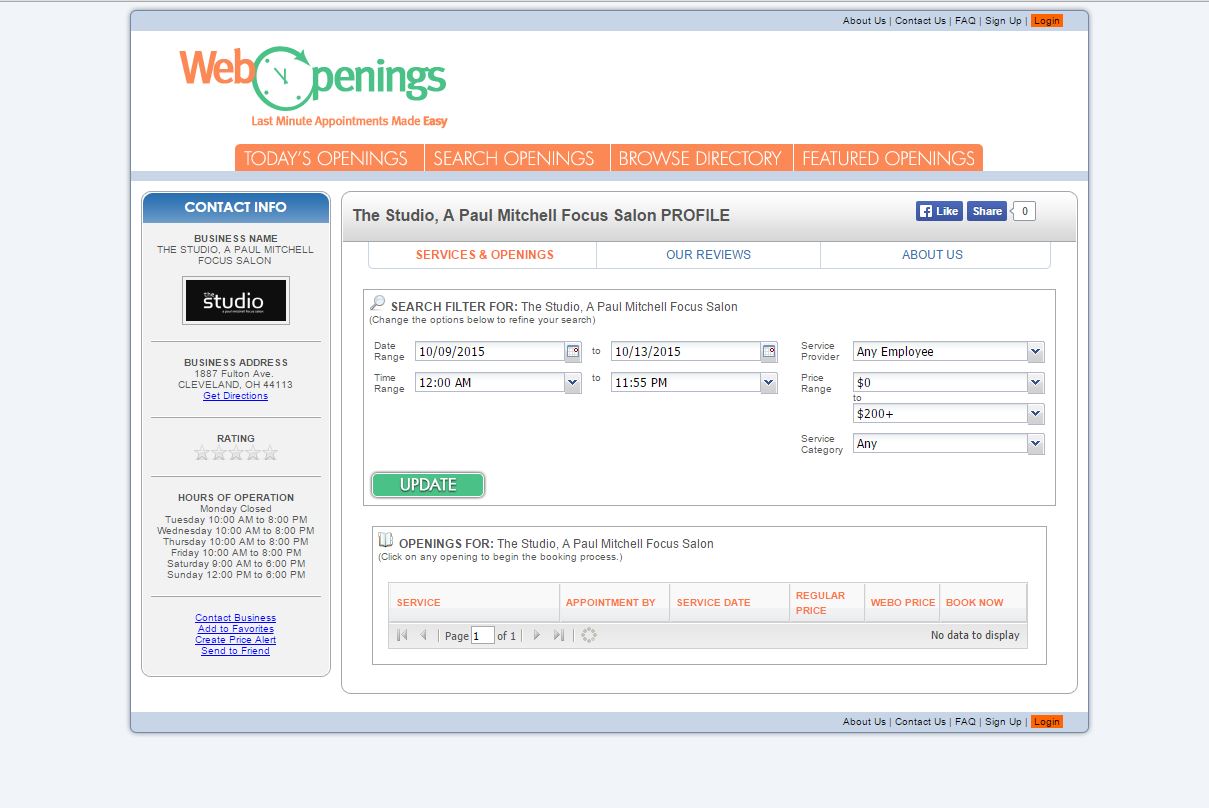

Whoa! Those are awful, like 1999 awful. Some don’t even have working websites and they are ranking in the Local Stack. None of those are useful, positive user experiences.
Exact Match Keywords
Look at all of these EM Keywords in Titles as well.
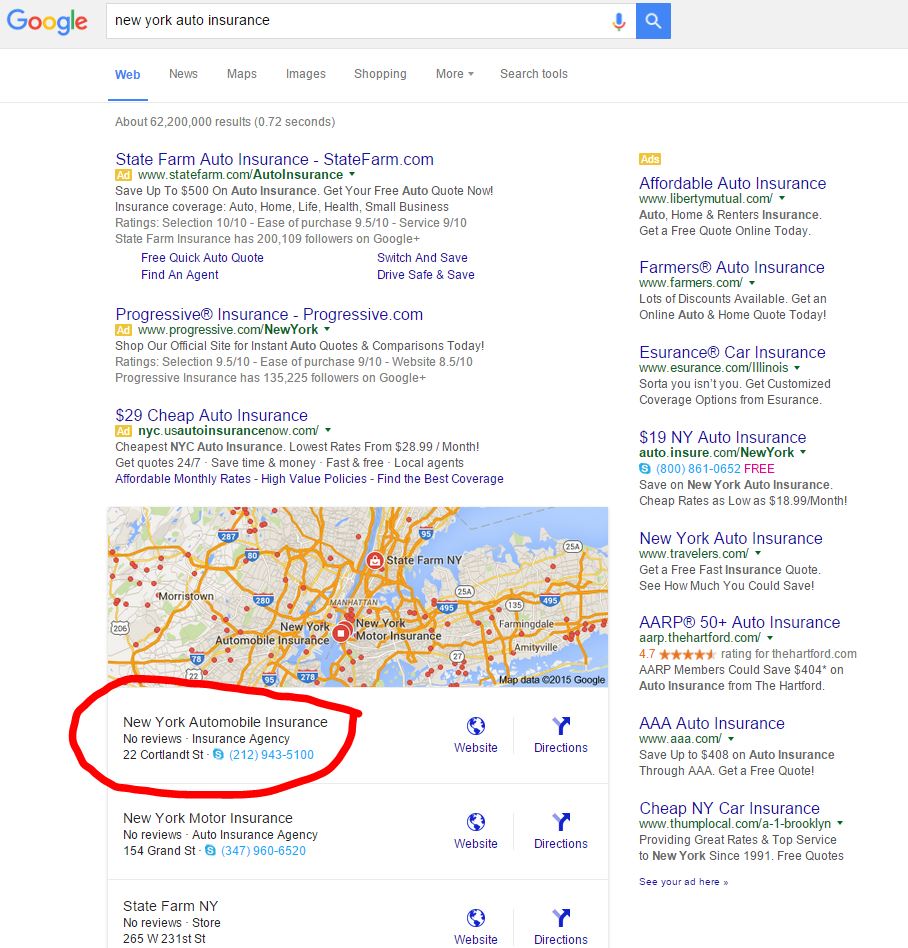

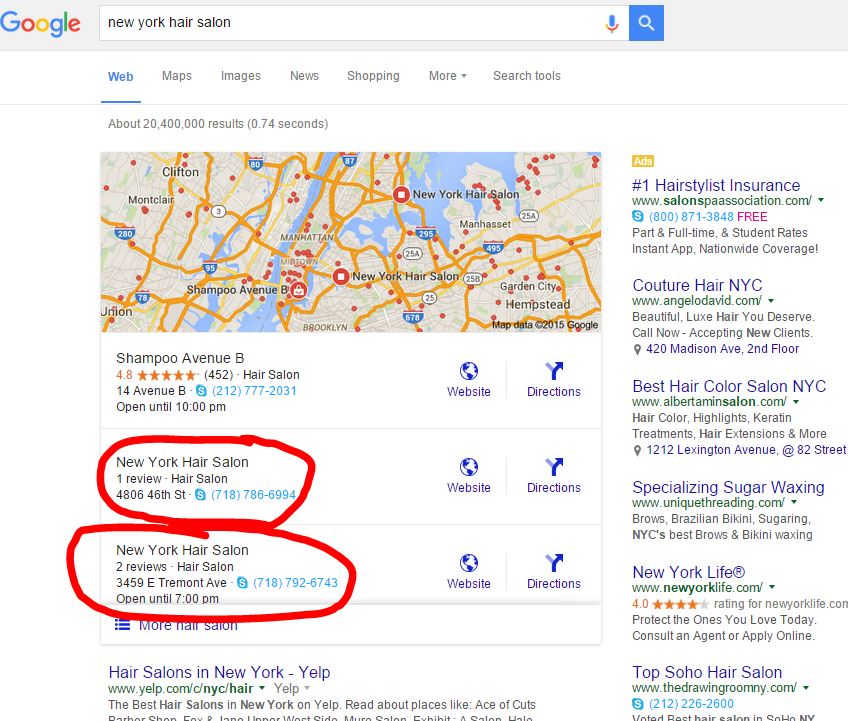

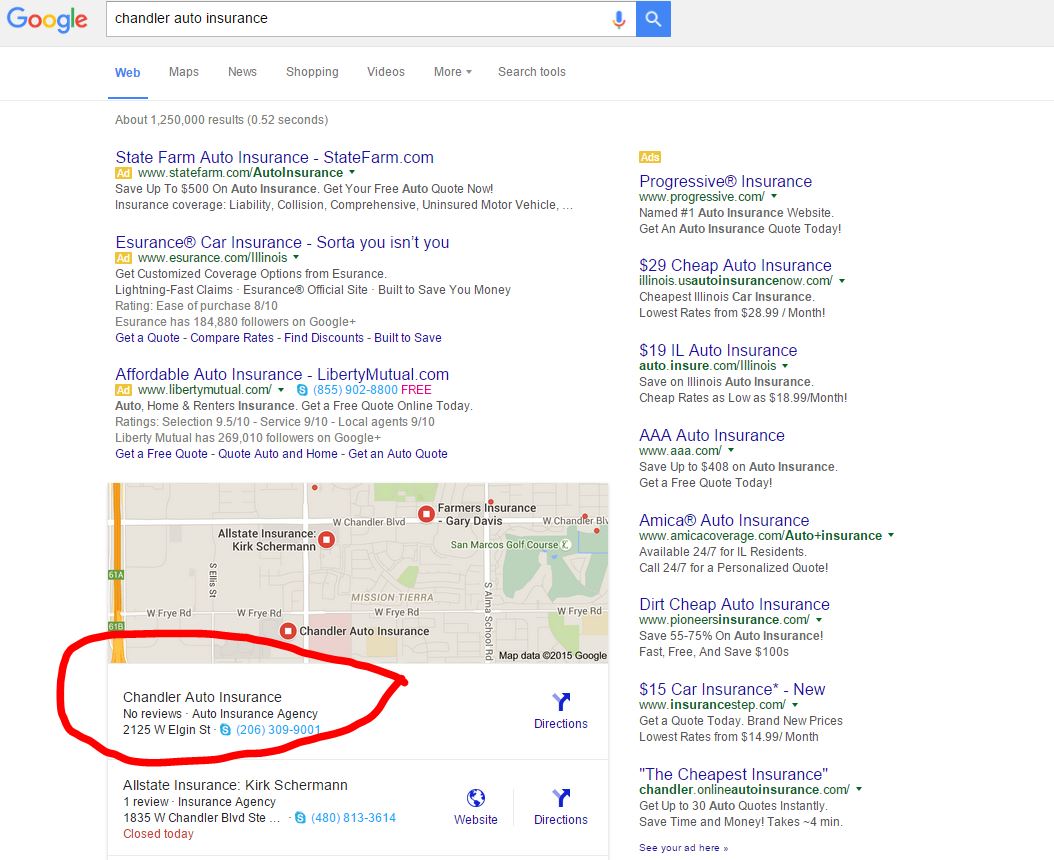

It appears having the exact keyword query in the business name is a big factor in ranking.
Wrapping Up
I’m more confused now than when I started this analysis. I thought I would see a clear data pattern which would suggest big brands are not as prevalent in the Local Stack. I found several industries where brands were not present in the Local Stack for no obvious reasons. I also found 1 industry, Self Storage, which the big brands dominated even though there are thousands of small players competing with them. The self storage industry completely ruined my theory.
I’ve heard from several SEO Experts who say the MLRF’s are working great for them and their clients, though I do not see the same in these industries. If NAP consistency, Reviews and a physical address in the city are crucial factors, why are the listings for the insurance industry completely awful and not reflective of those factors?
To me, the results analyzed leave much to be desired. Google has an algorithm to determine who ranks where but there wasn’t a clear pattern to the data.
Where are all of the big brands? Can the brands really be that bad at correcting their NAP and attaining solid citations? Every. Single. Brand? I find that hard to believe. Even if Pizza Hut, Dominos, Pep Boys and NAPA are not up on their citation game, there has to be at least 1 big brand in those 4 industries which is….right?! I’m certain at least 1 in the Insurance Industry is.
It’s as if Google is trying to focus on being “the brand” in that particular area in order to rank in the Local Stack. There are minimal brands listed in the Local Stack because in Google’s eyes, brands aren’t really Local. They are nationwide with a Local presence. Google may be rewarding the small business which is actually in the area, has been for some time and is the “brand” for that area. Allstate, NAPA and Pizza Hut have thousands of locations across the country and therefore aren’t truly local. Whereas, Joe’s Garage and Mike’s Pizza have been staples in the community for 20 years and everyone knows them in the city. They are the brand for the city.
I’m fully aware my hypothesis goes against everything Google has been saying about brands for the past five years. Maybe this is Google attempting to scare brands into a Pay-to-Play model. Maybe Google isn’t done shuffling the Local results.
Whatever it is, it’s confusing to me because the data doesn’t lie. It just doesn’t make sense either.
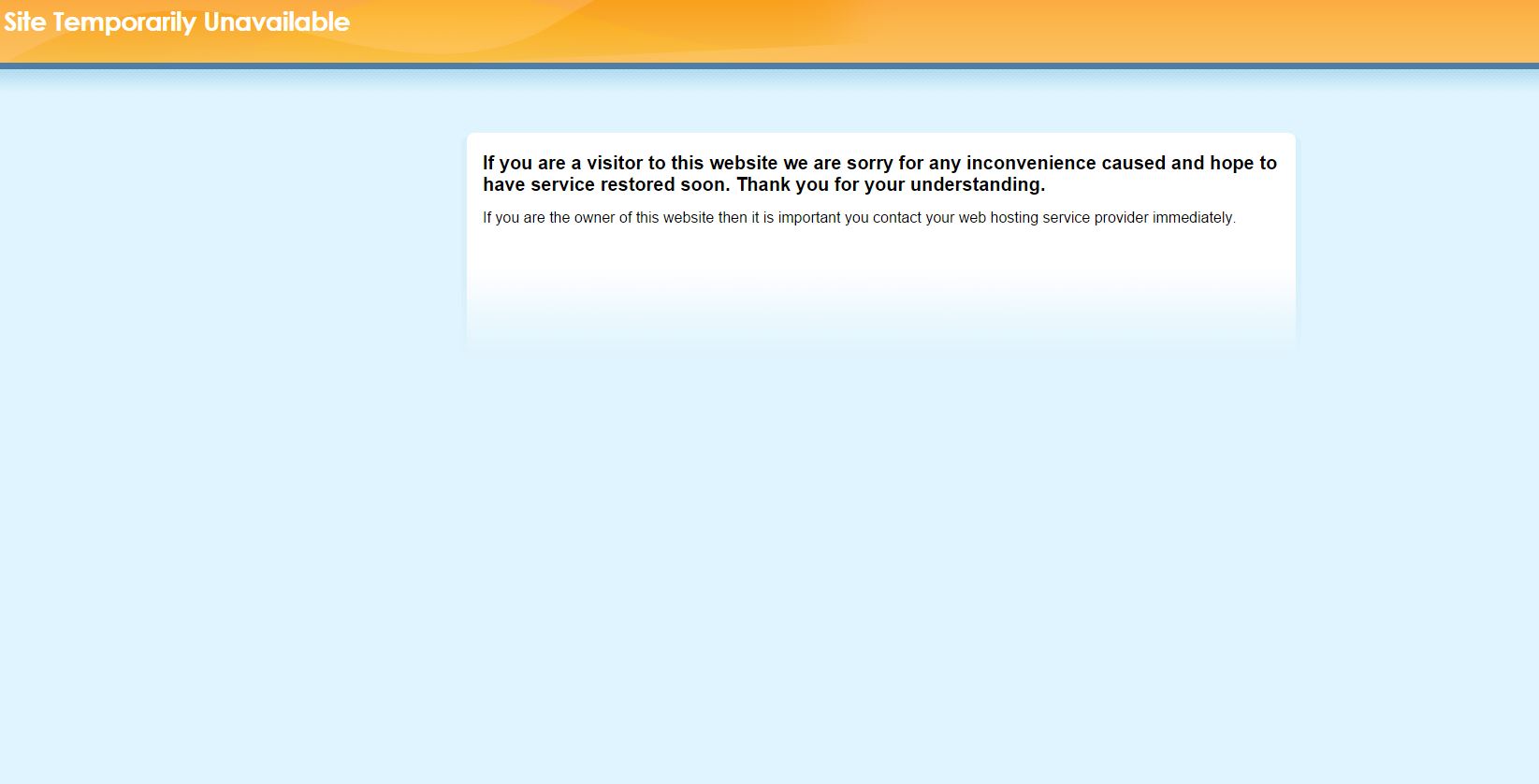
Brian,
Love the research. I’m sure the post and research quickly turned into a 40+ hour project.
I like to avoid these debates because the responses and debates over ranking factors have become so predictable and I feel like its groundhog day year in and year out since around 2010/11. With that said I will give you a couple items to consider that in my OPINION have caused the waters to be murky on the study. I have no interest in trying to back any of them up because we can’t weigh any single factor alone in a vacuum. Here goes…
1. Spam is still alive and kicking. In fact, I know a number of insurance companies in your shots that have been spamming for years. Including a national brand. You will not be able to analyze their backlinks for example because good spammers will often block Moz, aHrefs, or Majestic bots from crawling their sites as well as hide other tricks that WORK yet no mention in ranking factors. Great spammers, the only ones still alive aren’t going to invest 6 – 7 figures each year to just let everyone reverse engineer their tactics. Spam will always thwart these types of studies by (x) percentage. X changes daily.
2. When I search for pizza I don’t want to see Pizza Hut or Dominos. I know where they are and what they have to offer. If we were to do a survey with 10K participants in 50 cities I think you will find that most locals feel just as I do. I’m searching pizza because I’m looking for something UNIQUE, DIFFERENT, or NEW. When I am unfamiliar with a town/city and I want Pizza Hut – I’ll search “Pizza Hut near me”
3. Yelp is the search engine for the people. Maybe not for SMBs. I believe that if you want to know what the future of local search, reviews, and user-generated content is going to look like – then Yelp is the answer. Yelper users figured it out long ago. Amazingly detailed accounts about LOCAL BRANDS. I’m talking the best f$%*ing pizza joint, micro brewery, taco stand, or yoga studio. Look at the quality images added by Yelpers that often show ever item on the menu + prices. The descriptions that are book or magazine quality with amazing energy and emotion.
http://www.yelp.com/biz/franklin-barbecue-austin
http://www.yelp.com/biz/home-slice-pizza-austin
http://www.yelp.com/biz/method-hair-austin
http://www.yelp.com/biz/juke-auto-austin-2
Why would anyone what to see Tony Romas over Franklin BBQ? Pizza Hut over Home Slice? Great Clips over Method Hair? Advanced Auto or Ford Dealer over Juke Auto? For me – almost never.
4. Think about #2 and #3 and couple it with Google’s machine learning, algorithms learning from algorithms. Think about Darren’s http://www.slideshare.net/darrenshaw1/darren-shaw-user-behavior-and-local-search-dallas-state-of-search-2014 on User Behavior. I believe click through rates are now commonly accepted factors. Google is learning what locals already know. What do locals know? #2 and #3.
5. Regarding Gary I.’s comment “brands & cespool yada yada”.
* Define brand?
* What would you say publicly to your largest AdWords spenders (ie brands) if you were an Exec at Google?
* Could Google really keep locals engaged using Google’s search engine – if a search for “pizza” provided the follow results: Pizza Hut, Dominos, and Little Ceasar? Hell no, those search results would be about as valuable as Netscape.
* Is it possible that Google is betting that they will get Pizza Huts ad spend regardless of showing LOCAL BRANDS in the results?
*What about those 30 million SMB’s here in the US if brands own the 1st page?
I hope these thoughts offer you a different lens to look through. I’m not trying to be “smart”. The local ranking factors are all valid IMO but they represent a broad brush or good starting point for SMB’s to national brands. I also find experts sometimes just say what they found looking through the same “lens” of other experts.